Imagine you’ve just set up the perfect home theater, complete with the latest sound system and a massive screen.
You press play, and just as the climax of the movie approaches, a cacophony of honking horns and loud conversations from outside invades your room. Frustrating, isn’t it?
While acoustic foam is a popular choice for enhancing indoor acoustics, its effectiveness in soundproofing windows is a subject of debate and misconception.
In this comprehensive guide, we’ll dissect the capabilities and limitations of acoustic foam and explore the science of soundproofing to answer the question: Can acoustic foam actually soundproof windows?
From understanding the difference between soundproofing and acoustic treatment to weighing cost-effective alternatives, we’ll cover all you need to know to make an informed decision.
So, let’s dive in and debunk some myths.
What Is Acoustic Foam and Why Is It Popular?
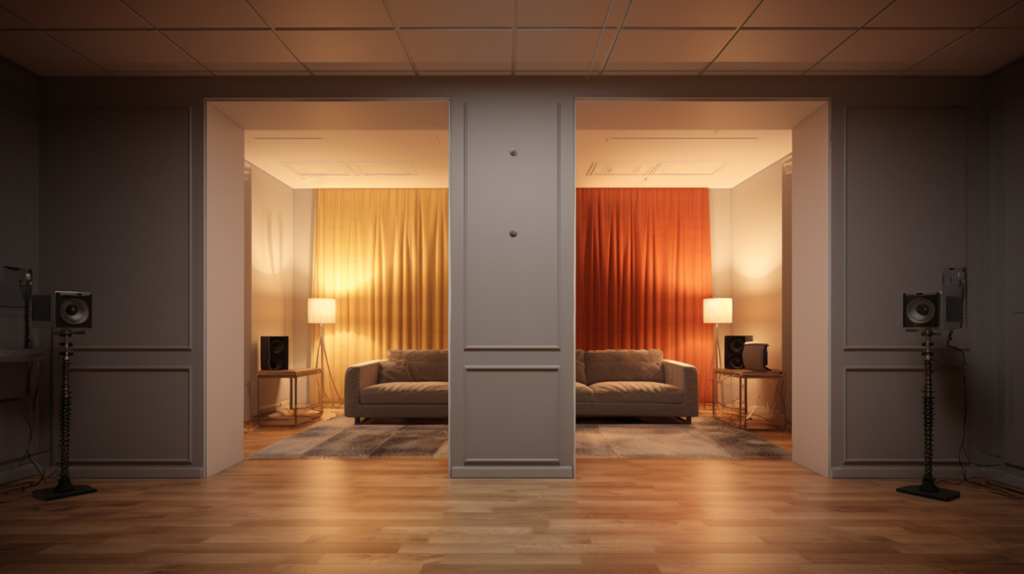
Acoustic foam is a specialized foam material designed primarily to improve the acoustic quality within a given space.
It is commonly made from polyurethane foam and melamine foam, which are porous and open-celled materials.
The porous nature of acoustic foam allows it to absorb sound waves, particularly those at higher frequencies.
This makes it highly effective in reducing echoes and reverberations, thus enhancing the auditory experience within a room.
It’s no wonder that you’ll often find these foam panels in recording studios, where even the slightest echo can impact the quality of a recording.
Similarly, they are popular in home theaters, where sound clarity is critical for an immersive experience.
However the popularity of acoustic foam extends beyond its effectiveness. One of the other reasons this material is so widely used is its cost that it is associated.
Compared to other acoustic treatment options, acoustic foam panels are relatively inexpensive.
This makes them accessible to independent artists, podcasters, and home theater enthusiasts working on a budget.
Additionally, installing acoustic foam is often a simple DIY project, which eliminates the need for professional installation services.
Just a few adhesive strips or some spray glue, and you can easily affix these panels to your walls.
These benefits make acoustic foam a popular choice, but they also lead to some common misconceptions, particularly about the material’s capabilities when it comes to soundproofing.
What’s the Difference Between Soundproofing and Acoustic Treatment?
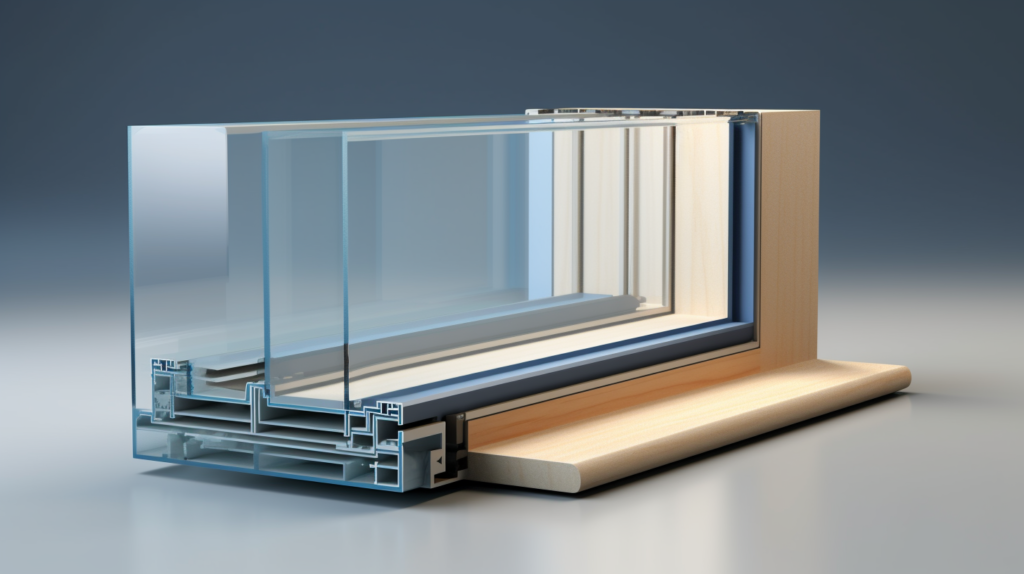
When it comes to modifying a space for sound, two terms often come up: soundproofing and acoustic treatment.
While they might seem similar at first glance, they serve very different purposes. Let’s break down these terms to understand their distinct roles.
Soundproofing refers to the process of isolating a space to prevent sound from either entering or leaving it.
Think of soundproofing as creating a barrier that seals you off from the external world, acoustically speaking.
In a soundproof room, you shouldn’t be able to hear traffic noise from the street or conversations from an adjoining room.
Acoustic treatment, on the other hand, has a different goal. It aims to improve the sound quality within a specific space.
While soundproofing blocks sound transmission between different environments, acoustic treatment deals with the sound that’s already inside the room.
It focuses on minimizing internal reflections and echoes to create a clearer and more precise sound environment.
For example, in a home theater, acoustic treatment will make dialogues clearer and effects more vivid, but it won’t block out the sounds of cars passing by outside your window.
Understanding this difference is crucial, especially when you are considering methods to block sound from entering or exiting a space, like window soundproofing.
How Does Soundproofing a Window Work?

If you’re dealing with noisy neighbors, traffic sounds, or any other external noises that disrupt your peace, soundproofing your windows might be on your to-do list.
But how exactly does it work? Soundproofing a window involves a deep understanding of some fundamental principles of acoustics.
These include the addition of mass, the use of damping materials, and a technique known as decoupling.
Let’s start with the addition of mass. The fundamental idea here is that sound has a harder time passing through denser materials.
That’s why you might find heavy, thick curtains somewhat effective in reducing noise.
However, for real soundproofing, materials with much greater mass are used, like laminated glass or even an additional layer of glass that adds significant weight to the window structure.
Damping is another essential principle in soundproofing.
It involves using materials that can dissipate the energy of a sound wave, effectively converting it into heat and reducing its amplitude.
Special types of glass or window films can serve this purpose.
Finally, there’s decoupling. This is a technique where layers of different materials are separated by air gaps or other insulating materials.
The idea is that sound waves lose energy as they try to pass through different mediums, especially if they have to navigate through air gaps in between.
Double-glazed or triple-glazed windows, which have two or three layers of glass separated by air or inert gases, utilize this principle effectively.
Each of these techniques can be used individually or in combination to soundproof a window, and understanding these principles is essential in selecting the right soundproofing method.
How Effective Is Acoustic Foam in Absorbing Sound?
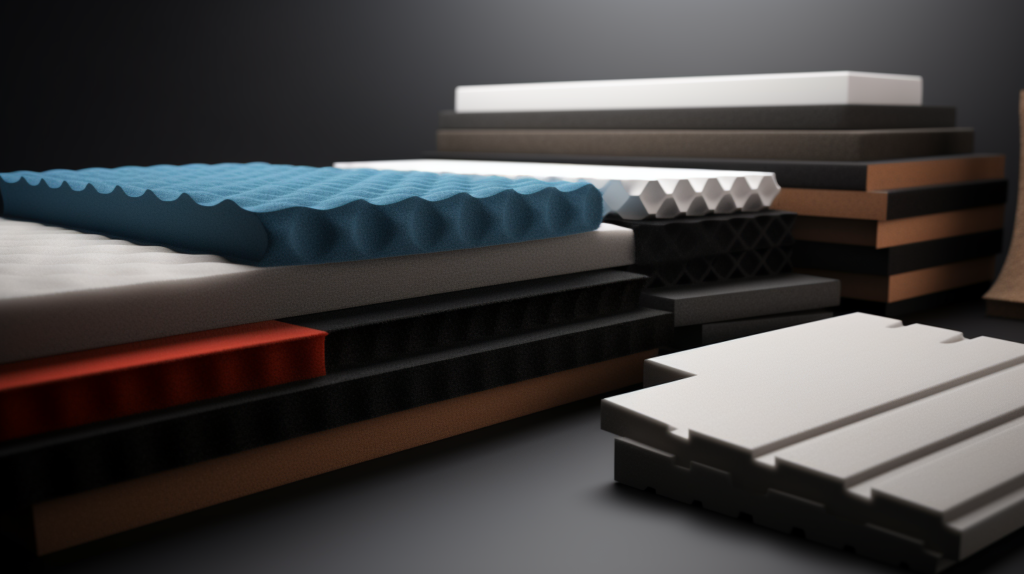
When it comes to sound absorption, acoustic foam often comes to mind. But what does “sound absorption” mean, and how effective is acoustic foam at it?
Sound absorption refers to the process by which a material takes in sound waves, reducing their amplitude and, consequently, their energy.
Acoustic foam is designed to do precisely this.
It is particularly effective at absorbing higher-frequency sound waves, which makes it a popular choice for applications like recording studios where echo and sound clarity are critical.
However, it’s essential to understand that sound absorption is not the same as soundproofing.
While acoustic foam is effective at absorbing sound waves and reducing echoes within a room, it is not designed to prevent sound from entering or exiting that room.
Its primary role is to improve the acoustic quality of the space it is installed in. This leads to a critical question—can acoustic foam soundproof windows?
To answer this question, we need to understand the limitations of acoustic foam in the context of soundproofing.
Can Acoustic Foam Actually Soundproof Windows?

If you’re looking for a quick answer, here it is: No, acoustic foam cannot soundproof windows.
The reasons for this are rooted in the material’s physical properties and the fundamental principles of soundproofing.
Acoustic foam is lightweight and porous, which makes it good at absorbing sound but not at blocking it.
Effective soundproofing materials need to be both dense and heavy, qualities that acoustic foam lacks.
Some people may argue that they’ve seen a noticeable difference in external noise levels after installing acoustic foam on their windows.
While it’s possible to experience a minor reduction in certain types of noise, such as high-frequency sounds, the foam will not provide the level of soundproofing most people are looking for.
It won’t effectively block out the sound of traffic, loud conversations, or other common outdoor noises.
If true soundproofing is your goal, you’ll need to look beyond acoustic foam to more specialized materials and methods designed for this purpose.
Why Do People Think Acoustic Foam Can Soundproof Windows?
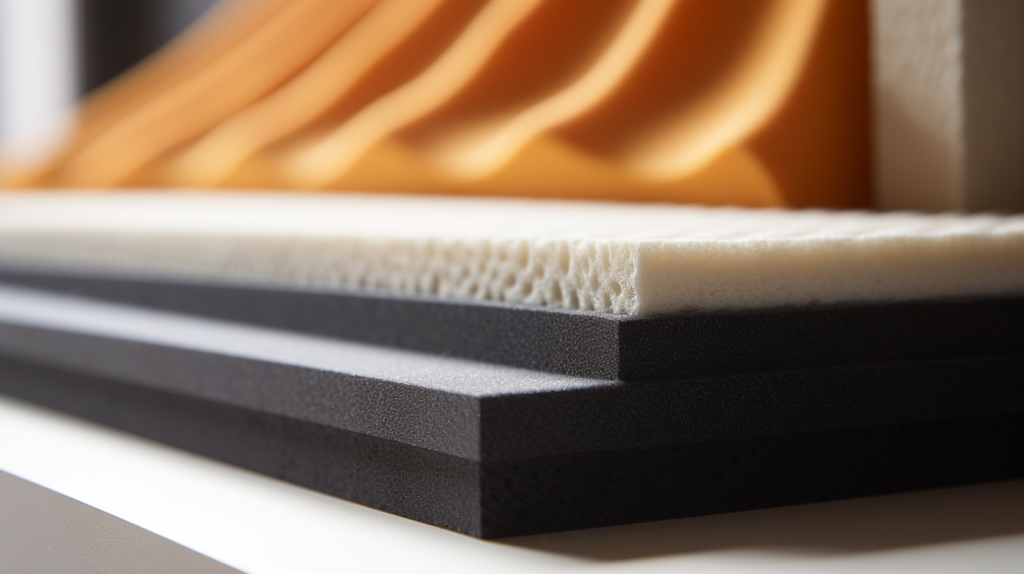
The belief that acoustic foam can serve as a soundproofing material is a common misconception.
It often arises from a mix of factors, including misunderstandings of acoustics and misleading marketing claims.
Many people think that because acoustic foam can absorb sound, it can also block it.
This notion is further fueled by numerous DIY videos and articles suggesting the use of acoustic foam for soundproofing purposes.
In reality, soundproofing and sound absorption are two distinct processes that serve different needs and require different materials.
Soundproofing involves preventing sound from entering or leaving a space, whereas sound absorption deals with improving the internal acoustics of a room.
The confusion between these two often leads people to believe that acoustic foam can effectively soundproof windows, which, as we’ve discussed, is not the case.
What Are the Limitations of Using Acoustic Foam for Window Soundproofing?
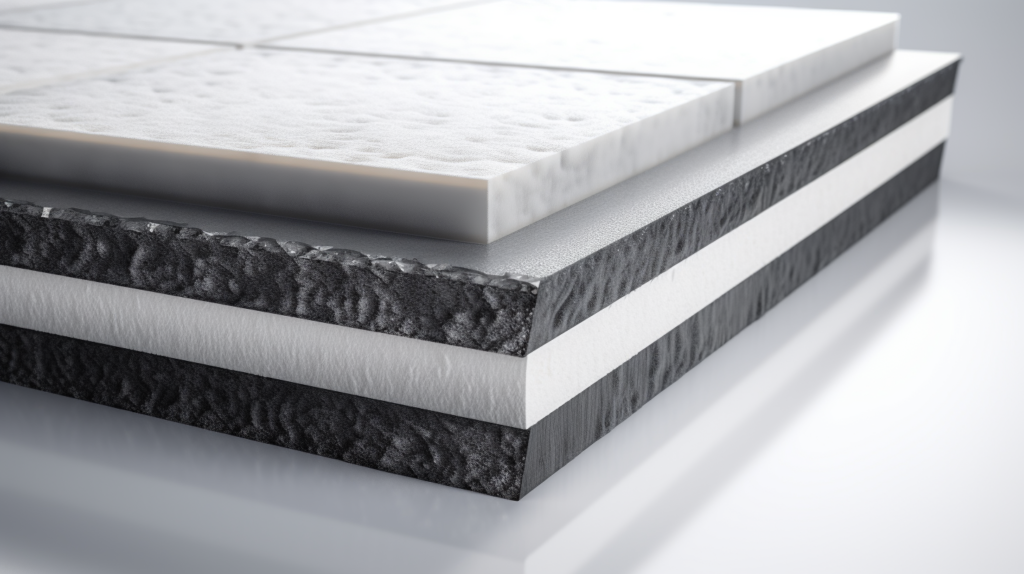
If you’re considering using acoustic foam for soundproofing your windows, it’s crucial to understand its limitations.
One of the most significant limitations is the lack of mass. As discussed earlier, effective soundproofing materials need to be heavy and dense to block sound waves.
Acoustic foam is lightweight, which makes it easy to install but not effective at preventing sound transmission.
Another limitation is the material’s porous nature. While this quality makes it effective at absorbing sound, it also means it can’t provide an airtight seal.
Effective soundproofing often involves sealing gaps and cracks to prevent sound from passing through, a role that acoustic foam simply can’t fulfill.
Moreover, the material is not very effective against low-frequency noises, like the rumble of a truck or the bass from a loudspeaker.
These limitations make it clear that while acoustic foam is an excellent material for certain applications, it’s not suitable for window soundproofing.
How Does Acoustic Foam Compare to Other Soundproofing Materials?
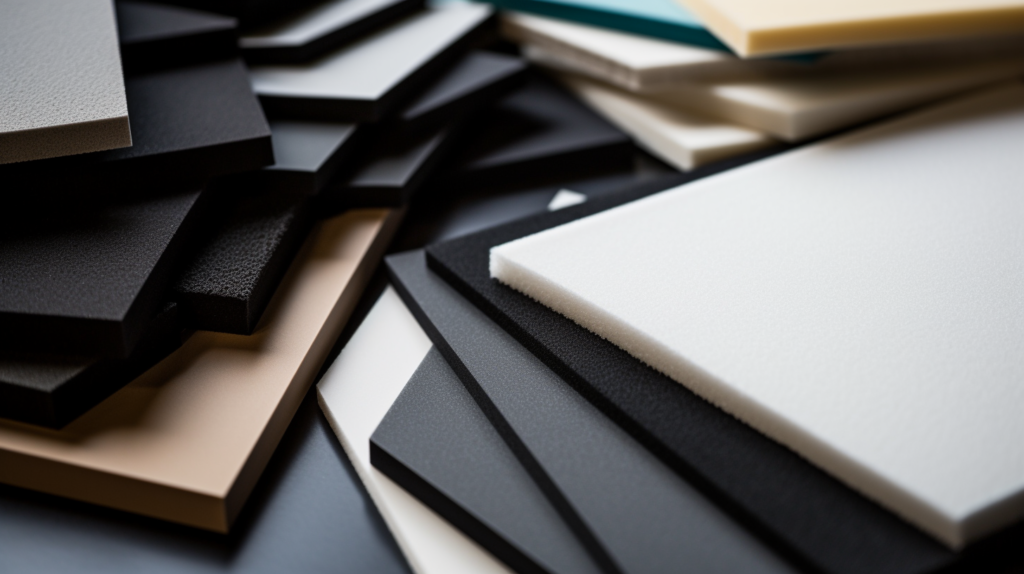
If acoustic foam falls short for soundproofing, what materials outperform it, and why? Let’s consider mass-loaded vinyl, a common soundproofing material.
This material is heavy, dense, and designed explicitly for blocking sound. It works by adding mass to a structure, which in turn reduces the amount of sound that can pass through it.
When compared to acoustic foam, it’s clear that mass-loaded vinyl is far more effective at preventing sound transmission due to its weight and density.
Another alternative that often comes up is weatherstripping. Unlike acoustic foam, weatherstripping creates an airtight seal, making it highly effective at blocking sound.
Used commonly in doors and windows, it prevents the passage of air, and since sound travels through air, blocking this pathway is crucial for soundproofing.
Weatherstripping materials like adhesive-backed tape or door sweeps are not only effective but also relatively inexpensive, making them a popular choice for DIY soundproofing projects.
When you weigh these alternatives against acoustic foam, it becomes evident that for the specific task of soundproofing, other materials offer far better results.
What Are Effective Alternatives for Soundproofing Windows?

So if acoustic foam isn’t the right material for soundproofing windows, what are the effective alternatives?
One such alternative is weatherproof window inserts. These are custom-built to fit snugly inside your existing window frames, creating an additional layer of sound-blocking material.
They are often made of acrylic and are designed to create a tight, air-sealed fit, which is essential for blocking sound.
While they can be a bit expensive, their effectiveness in reducing external noise makes them a worthwhile investment.
Another highly effective alternative is double or triple-glazed windows. These windows consist of multiple glass panes separated by layers of air or inert gas like argon.
The design itself serves multiple soundproofing principles, including adding mass and creating air gaps, making these windows highly effective at reducing external noise.
However, they can be quite expensive to install, especially if you’re replacing existing single-pane windows.
But if you’re in a particularly noisy area and are looking for a long-term solution, double or triple-glazed windows are one of the most effective options available.
How Much Does Effective Window Soundproofing Cost?

Talking about soundproofing inevitably brings us to the topic of cost.
Effective soundproofing solutions often require a financial investment, and it’s essential to consider this aspect when planning your project.
For instance, weatherproof window inserts can cost anywhere between $200 to $400 per window, depending on various factors like size, thickness, and whether or not they are custom-made for your windows.
On the higher end, double or triple-glazed windows can cost upwards of $700 to $1000 per window, depending on the type of glass, the frame material, and installation costs.
While these numbers might induce a bit of sticker shock, it’s crucial to weigh them against the benefits that effective soundproofing can bring.
Quieter living spaces can significantly improve quality of life, reduce stress levels, and potentially even improve health by ensuring better sleep.
Therefore, when seen as an investment in your well-being, the costs, while not insignificant, can be wholly justified.
Conclusion
While acoustic foam is excellent for absorbing sound and improving indoor acoustics, it falls short in providing effective window soundproofing.
For genuine sound isolation, it’s essential to turn to specialized materials and methods designed for that purpose.
Investing in these proven solutions can significantly improve your quality of life by reducing external noise.
In summary, acoustic foam has its merits, but window soundproofing is not one of them.
